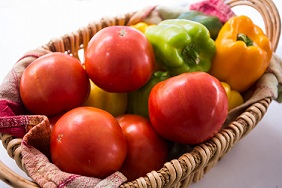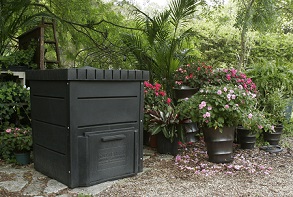Written by Samantha Walter-Cano, edited by Andrea Lazzari & Kaitlyn McCarty
Did you know that Americans lose $218 billion on wasted food every year? That’s close to $660 per person! Besides being damaging to the environment, wasting food costs you money. April 10th through 16th was officially food waste prevention week. This week brings awareness to food waste, and how you can benefit from reducing your household’s food waste.
Food Waste and the Environment
When food is thrown out, where does it go? When you throw out food, it goes to the landfill. There, the food is broken down, and emits greenhouse gases such as carbon dioxide and methane. Food waste accounts for about 8% of greenhouse gas emissions. Reducing food waste is the number one action you can personally take to reduce greenhouse gas emissions. An estimated 40% of all food produced goes to waste and is never eaten by humans. 39% of that food waste is from households, while 61% is from commercial entities.
What can be done about food waste?
Reducing food waste in your household can be as easy as buying less food at the grocery store. You can match your shopping amount to the reality of how much you and your family eat. If your family didn’t finish all the groceries last week, try reducing the number of groceries you buy this week. Planning menus and meals before going shopping can be a helpful way to visualize how much food will be consumed that week. Making a shopping list and sticking to it is another efficient way to help you shop according to what is needed. You’ll find that doing this can actually save you a lot of money on groceries.

What happens if I still have some leftover food? What do I do with it? Storing food correctly can help to keep food in the fridge linger without spoilage. Here are some tips from Foodwastepreventionweek.com to help you properly store common produce:
- Onions and Potatoes: These foods prefer to be stored in cool, dry areas. They are best kept in the dark, separated from each other. If stored with onions, potatoes will sprout and rot more quickly.
- Tomatoes: To retain the most flavor and help them to ripen faster, tomatoes should be kept at room temperature. Once ripened, store tomatoes in the refrigerator for about one week.
- Milk: Store milk in the back of the refrigerator where it is the coldest. Milk stays fresh longer at a temperature of between 33 and 37 degrees Fahrenheit.
- Avocados: These healthy fruits ripen best at room temperature. However, they prefer the dark so keep them out of direct sunlight. Are they already just right? Ripe Avocados can be stored in the refrigerator.
Storage

If there is a problem with storing food and leftovers, you can always donate produce to your local food bank before the food’s expiration date. Having a designated “Pot-Luck”-day for leftovers can also help to clear your fridge, and prevent food from wasting. Freezing small portions is also a great way to save those for another small meal. Taking leftovers to work and sharing with others can be a great use of your leftovers! Scraps can be used for composting which improves growing conditions for plants and adds nutrients into the soil. Freezing foods for later use can be helpful in preventing food waste. In the end, the best way to reduce food waste is to buy less!
References:
Food Waste Prevention Week. FW Prevention Week. (n.d.). Retrieved April 12, 2023, from https://www.foodwastepreventionweek.com/
Preventing Wasted Food at Home. Environmental Protection Agency. (April 4, 2023). Retrieved April 12, 2023, from https://www.epa.gov/recycle/preventing-wasted-food-home
 2
2
